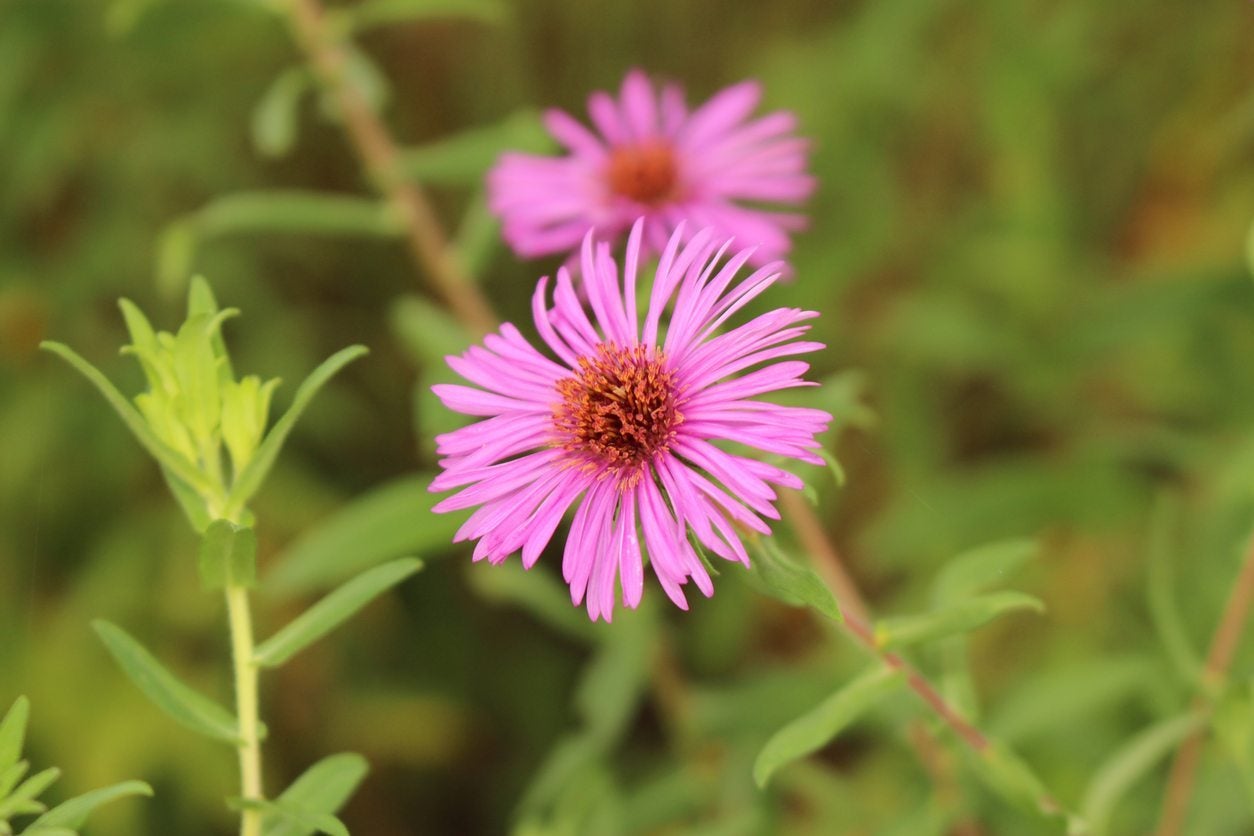New York Aster Information – Tips For Growing Michaelmas Daisies


Growing Michaelmas daisies in the garden is a real joy. These perennials provide fall color after the blooms of summer are already gone. Also known as New York aster, these pretty, small flowers are a great addition to any perennial bed and require only a little bit of care.
New York Aster Information
New York aster (Aster Novi-belgii), or Michaelmas daisy, is a variety of aster that is taller, which makes it a good choice for a bed’s backdrop. Many of the cultivars of New York aster are very tall, more than 2 feet (61 cm.) and as tall as 6 feet (2 m.). Colors are varied too, with hundreds of cultivars in white, pink, purple, red, blue, yellow, orange, and even those with double blooms. New York asters in gardens are prized, not just for their height and varied color, but also for the fact that they bloom in fall. They got the nickname Michaelmas daisy because these flowers tend to bloom at the end of September, the time of the feast of St. Michael. They are perfect for extending your garden’s color well past the summer months. Many cultivars will continue blooming for six weeks. These daisies are great for beds, but can also be used in natural, wildflower plantings, in containers, and can be grown for cut flowers.
How to Grow New York Asters
As a perennial native to the eastern U.S., Michaelmas daisy care is simple if you have the right climate and conditions. These flowers are hardy in USDA zones 4 through 8. They prefer full sun but will tolerate partial shade, and they need soil that is well drained. Michaelmas daisy is not aggressive or invasive, so you can count on it not taking over your beds, but rather growing in attractive clumps that flesh out where you plant them. You can propagate your existing plants by division. It is a good idea to divide every two years or so, just to keep the plants healthy. Not much care is needed for New York aster, but if you have some of the very tall cultivars, you may need to stake them as they grow. You can also pinch them through late summer to limit vertical growth, encourage more fullness, and to get more blooms in the fall. Once your flowers are done blooming in late fall, cut them down to the ground to prevent self-seeding. Growing Michaelmas daisies is relatively easy, and the reward is great: weeks of fall flowers in a variety of colors.
Sign up for the Gardening Know How newsletter today and receive a free copy of our e-book "How to Grow Delicious Tomatoes".

Mary Ellen Ellis has been gardening for over 20 years. With degrees in Chemistry and Biology, Mary Ellen's specialties are flowers, native plants, and herbs.